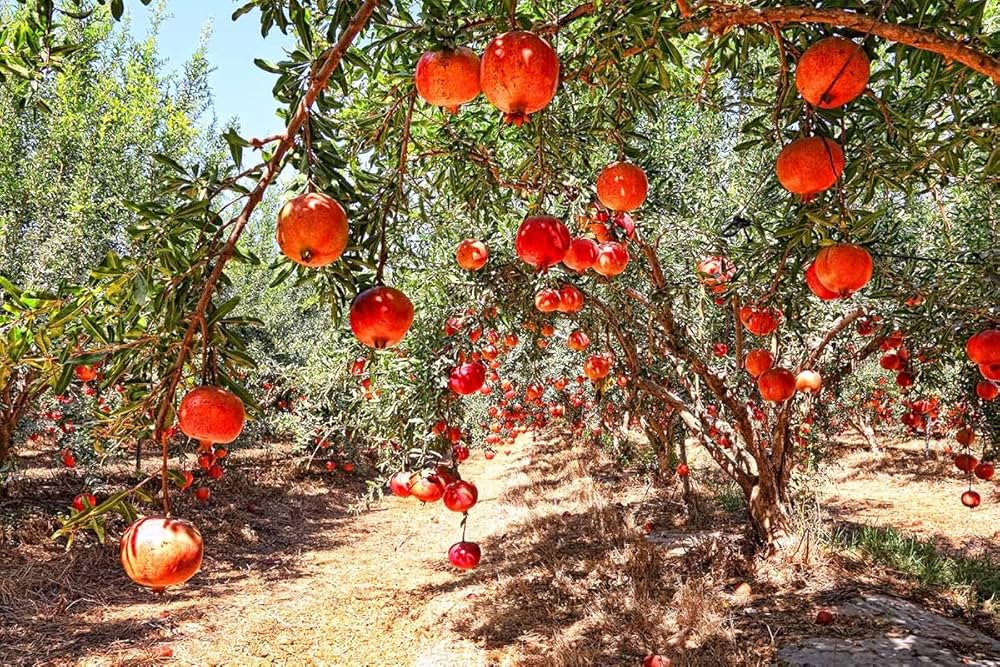Welcome to Aer Uzhavan
- Send Your Mail
- aeruzhavan24@gmail.com
- Contact Number
- +91 99947 03677 / +91 99947 03656 / +91 86105 31570
Product Detail
Pomegranate Plants
- Pomegranate Plants are hardy, deciduous shrubs or small trees that are well-known for their delicious, nutrient-packed fruit. Pomegranates thrive in hot, dry climates and are widely cultivated for their edible seeds and juice, which are rich in antioxidants and vitamins.
- Pomegranate trees are small to medium-sized, typically growing to around 3-5 meters in height, though some varieties can grow taller.
- The fruit is a round, leathery-skinned berry, usually 12-15 cm in diameter. The outer rind can range from yellow to deep red, while the inside contains many jewel-like seeds surrounded by juicy, tangy pulp. Pomegranates ripen in the fall, typically around 5-7 months after flowering, depending on the variety and climate.
- Pomegranates can tolerate some cold (down to -10°C or 14°F) once established but may not do well in areas with frost or extreme humidity.
- Pomegranates grow best in well-drained soil with a neutral to slightly acidic pH (pH 6.0 to 7.5).
- Pomegranate trees are drought-tolerant once established but will perform best with regular watering during the growing season, especially when the fruit is developing.
- Pomegranates are known for their heart-healthy benefits, anti-inflammatory properties, and antioxidant-rich profile. They may help lower blood pressure, improve cholesterol levels, and reduce the risk of certain cancers. Pomegranates are also known to improve digestion, boost the immune system, and promote skin health.
- Pomegranate trees are a rewarding fruit tree to grow, offering not only delicious fruit but also numerous health benefits. They require a warm climate, well-drained soil, and plenty of sunlight to thrive. With proper care, pruning, and attention, your pomegranate plant will produce an abundant crop of juicy, nutrient-rich fruit year after year.

